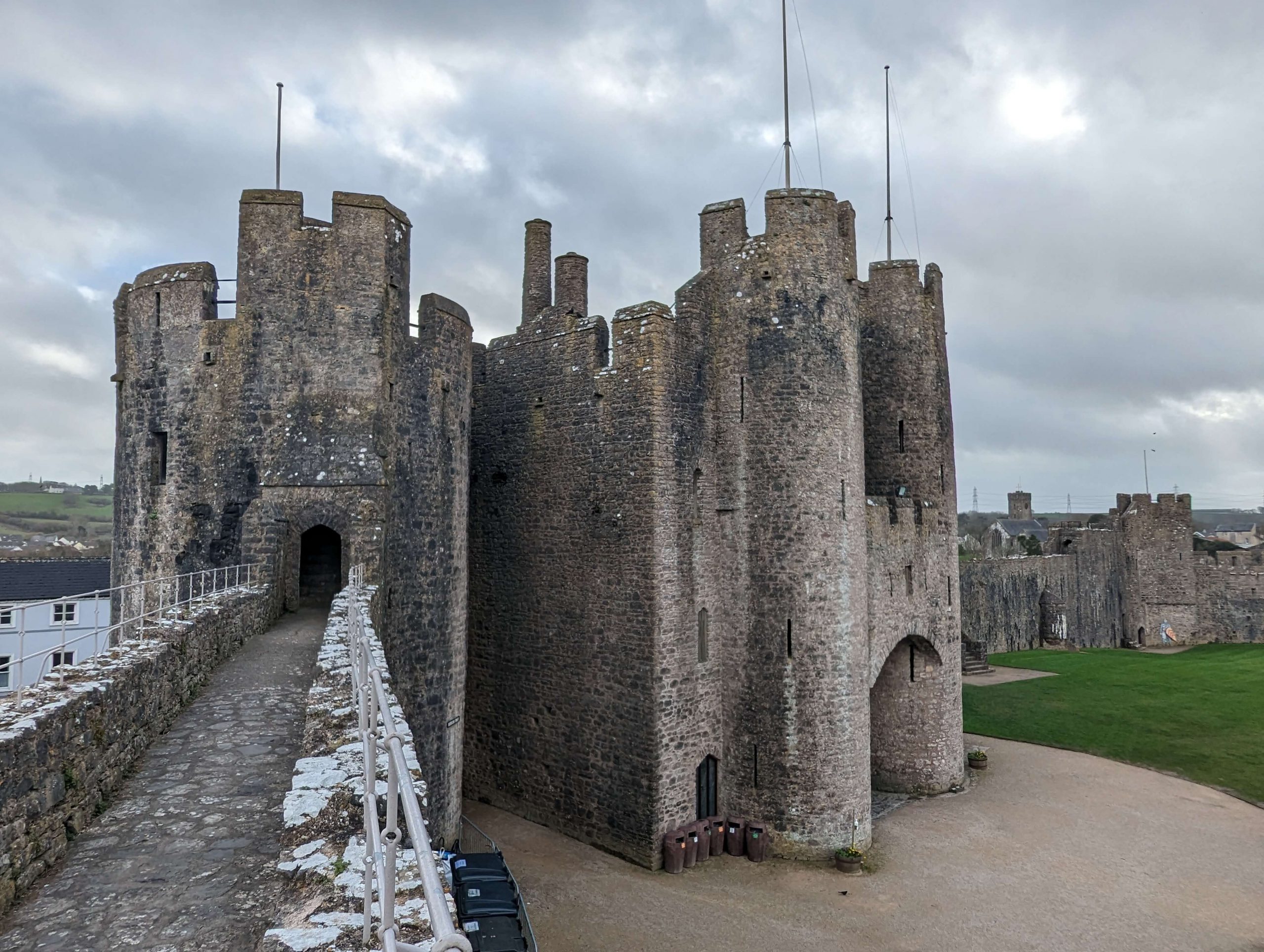Pembroke Castle is located in the centre of Pembroke, Pembrokeshire in Wales on a strategic rocky promontory next to the Pembroke River. Pembroke Castle is said to be one of the finest castles not only in Wales but also throughout Britain. It serves as a testament to the opulence and influence of the medieval Earls of Pembroke and is the birthplace of Henry VII, the first Tudor King.
The story of the castle begins in 1093, when during the Norman invasion of Wales a small timber motte-and-bailey fortification was built by Roger de Montgomery, 1st Earl of Shrewsbury. The history of the site upon which the castle sits dates much further back, all the way back to the stone age!
| Built | 1093 (Timber) / 1204 Onwards (Stone) |
| Type | Linear Castle |
| Condition | Partially Restored |
| Ownership | Philipps family |
| Access | Public – Admission Fee |
| Postcode | SA71 4LA |
Click here to watch our video exploring Pembroke Castle and discover its history
Stone Age & The Romans
Beneath the castle lies an immense limestone cave known as the Wogan Cavern. Archaeological findings of stone tools suggest human habitation dating back to the Middle Stone Age. Additionally, Roman coins have been discovered, suggesting the possibility of the cave being used as a trading post by the Romans. Interestingly, as a nod to Welsh mythology, the cavern is also believed to be the abode of a fearsome dragon.
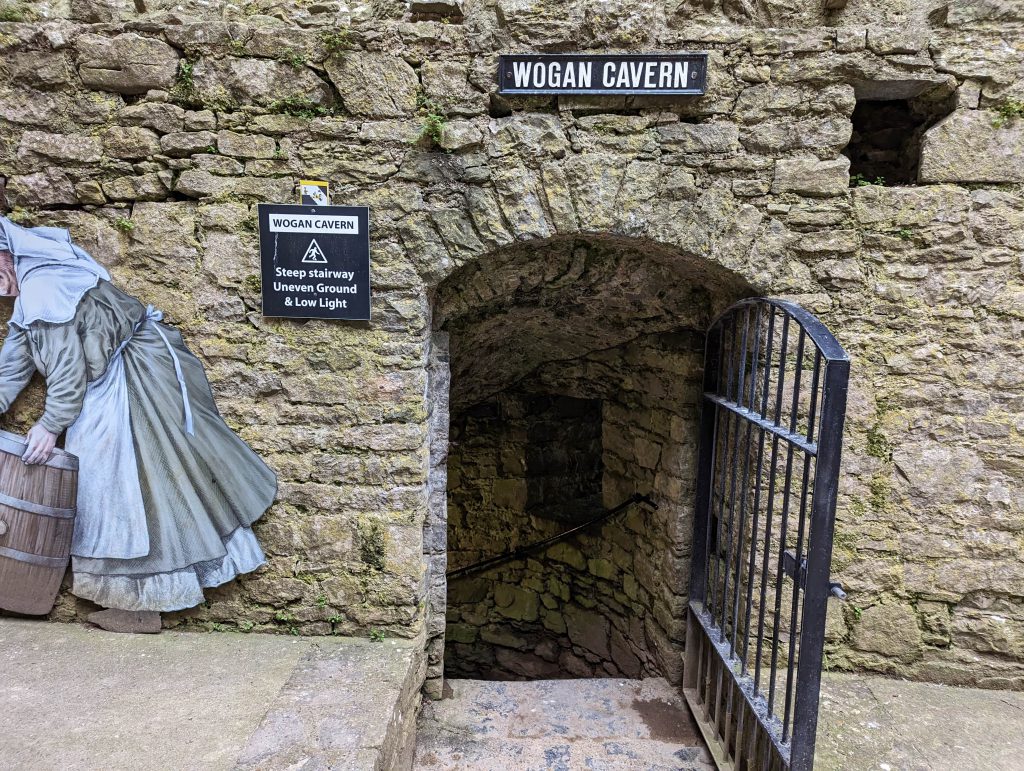
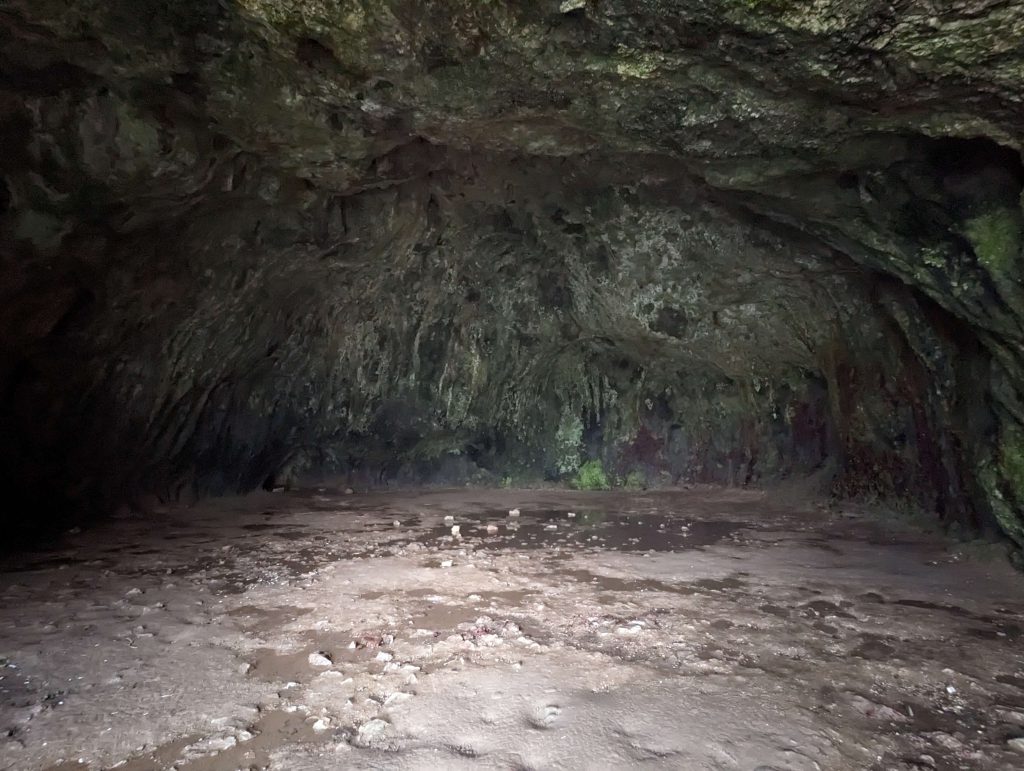
Norman Castle
In the aftermath of the Norman invasion, Rhys ap Tewdwr, the leader of south-west Wales, agreed a truce with William the Conqueror. Despite a few years of peace, tensions escalated after Rhys ap Tewdwr’s death in 1093, resulting in an invasion by the Norman Earl of Shrewsbury, Roger de Montgomery. Shortly after gaining control of the area, Roger initiated the construction of a modest timber motte-and-bailey castle in Pembroke.
Upon Roger’s death in 1094, his son Arnulf appointed Gerald de Windsor as steward to manage his Pembroke estate. Despite the castle’s simplistic design, it successfully repelled multiple counter-attacks and did not fall to the Welsh.
In 1102, Arnulf joined a rebellion against Henry I, which ultimately proved unsuccessful, resulting in him fleeing to Ireland and the crown seizing all of his British estates, including Pembroke Castle
Henry subsequently appointed a new castellan to oversee Pembroke Castle, but this individual proved to be incompetent. In response, the king reinstated Gerald de Windsor as castellan to effectively manage the castle. It was during this era that the town of Pembroke was founded, it originally occupied the site of the present Outer Ward, later spreading eastwards along the peninsula.
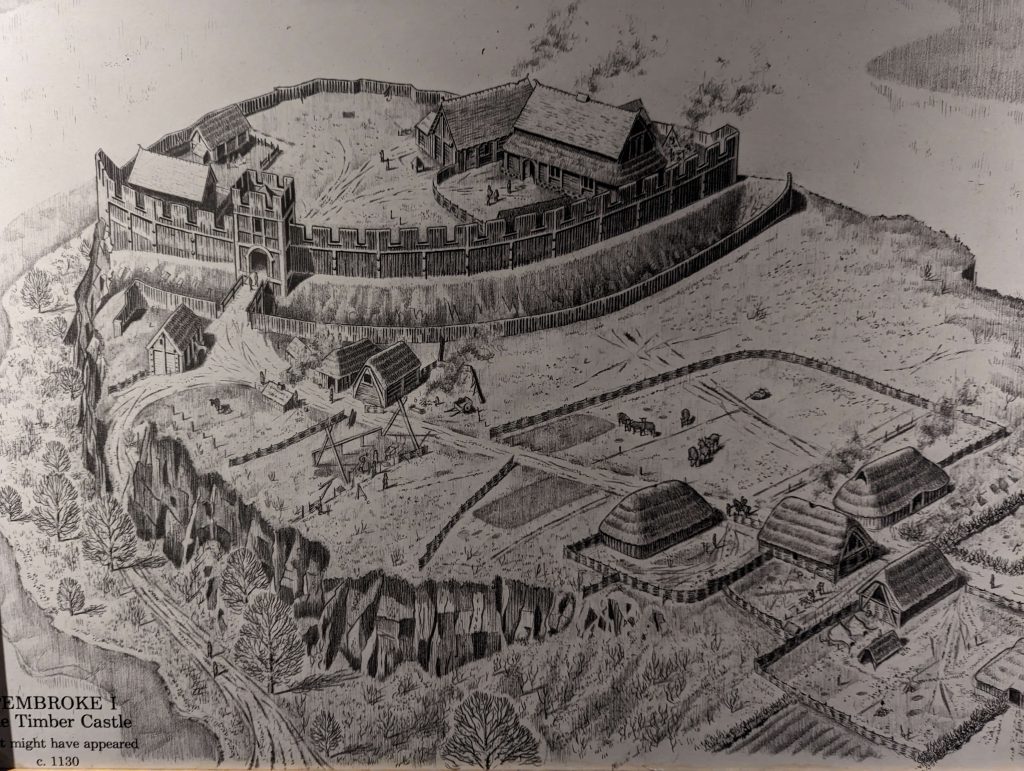

Strongbow
Following Henry I’s reign, Pembroke Castle was granted to Gilbert de Clare by King Stephen, who bestowed upon him the title of the first Earl of Pembroke. Gilbert passed away in 1148, reportedly during an argument with the King. The castle passed to Gilbert’s son, Richard ‘Strongbow’ de Clare, (Strongbow Cider is named after Richard).
In 1169, Diarmait Mac Murchada, the King of Leinster in Ireland was in conflict with his neighbouring regions and had lost a great deal of land. Diarmait appealed for help and in return he offered land, power and his daughter’s hand in marriage. It was Richard ‘Strongbow’ de Clare who came to aid the King with an army of 1200 men and succeeded.
Strongbow married Diarmait’s daughter, Aoife Mac Murchada, and shortly afterwards Diarmait died and Strongbow proclaimed himself Lord of Leinster and Governor of Ireland. This bold move did not go down well with King Henry II and Strongbow found himself out of the King’s favour and the crown took possession of Pembroke Castle.
Strongbow eventually regained favour and Pembroke Castle was returned to him, but following his death in 1176 without a male heir, Henry II reclaimed the castle. In 1189, Strongbow’s daughter, Isabel married the renowned William Marshal, one of Richard I’s most loyal supporters. It was not until 1199, when it was King John who sat on the English throne that William was finally granted the title of Earl of Pembroke and ownership of the castle.
Timber Castle To Stone Fortress
The period following the death of Henry II was marked by significant tension between the Anglo-Normans and the Welsh, with ongoing conflicts between the two groups. At one stage, the renowned Welsh prince, Rhys ap Gruffydd had successfully regained control over all the territories in southwest Wales, with the exception of Pembroke.
When William Marshal returned from battle in Normandy in 1204 he immediately set about transforming the Castle’s timber structure into a profound stone fortification. This included the cylindrical great keep that contained five stories and has embellished windows and a domed roof. The original entrance to the keep was located on the first floor, accessible via an external stairwell. The keep’s roof was domed and featured several putlog holes that supported a wooden fighting-platform.
The curtain wall of the inner ward had a large horseshoe-shaped gate at the south-west side. The inner ward itself comprised William Marshal’s Great Hall and various private apartments and other general buildings.
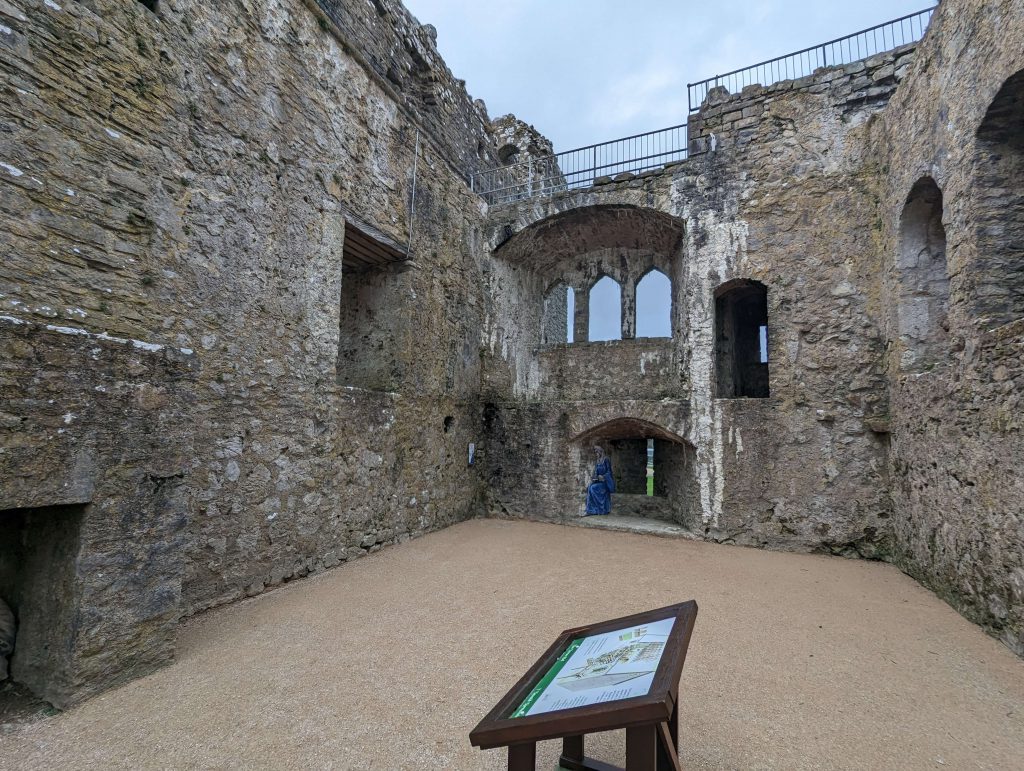
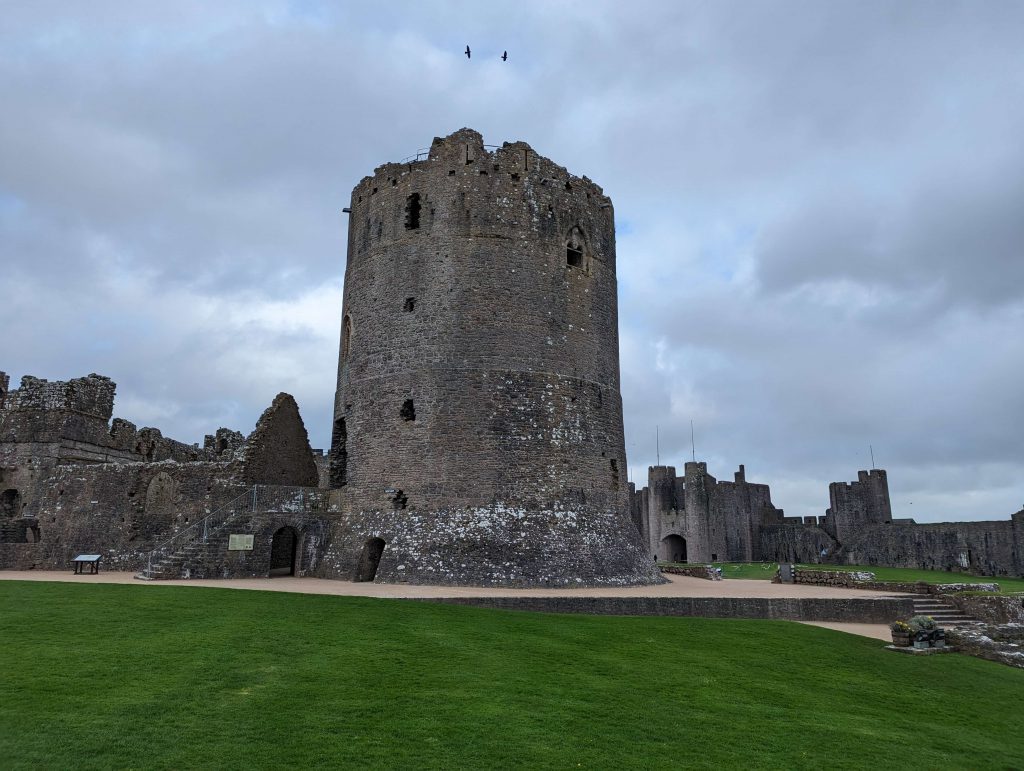
In addition, the castle was built over a natural cave known as the Wogan Cavern. With access to it via a spiral staircase and fortified with a wall and gateway, it was likely used as a boathouse. The outer ward was defended by a number of round towers, a twin-towered gatehouse and a barbican.
William Marshall with a true knight to the end and at the age of 70 he had one last fight in him, at the Second Battle of Lincoln in 1217 he led the King’s army against an invading French force. In 1219, at the astounding age of 73 (life expectancy, even for those born with land was only a mere 31.3 years) he passed away. During his long life, he had served four kings and participated in numerous battles. Additionally, William was said to have won over 500 jousting tournaments, cementing his status as a superstar of his time.
It is surprising that William Marshal’s name is not more widely recognised, given his many achievements. However, some believe that a curse may have contributed to his relative obscurity. According to legend, an Irish bishop placed a curse on William Marshal, predicting that all of his sons would die without leaving any heirs. Sadly, this curse did eventually come to pass, which may have contributed to William Marshal’s legacy being somewhat overshadowed in history.
In 1220, Llewelyn the Great launched an invasion of the Pembroke estates. However, the citizens of Pembroke paid a substantial sum of 100 pounds to dissuade Llewelyn from attacking the castle or the town.
The Hated De Valences
The castle eventually came under the ownership of William de Valence, who was the half-brother of Henry III and became Lord of Pembroke through his marriage to Joan, the granddaughter of William Marshal. Unlike the well-regarded William Marshal, William de Valence was one of the most hated figures of the Middle Ages. He was widely considered to be cruel and boastful.
To assert his elevated status, Valence undertook significant renovation work at Pembroke Castle, including the rebuilding of the outer ward in stone, the addition of a grand new south-facing front, and the construction of a gatehouse, which began around 1260. Valence also built a new two storey Great Hall block in the 1280’s, the hall was grand and the ornate windows may have contained stained glass, this was a hall built to impress. Later on, Valence made Pembroke Castle his primary residence. He also used the castle as a military base during the conquest of North Wales by his nephew, Edward I, as they battled the Welsh princes.

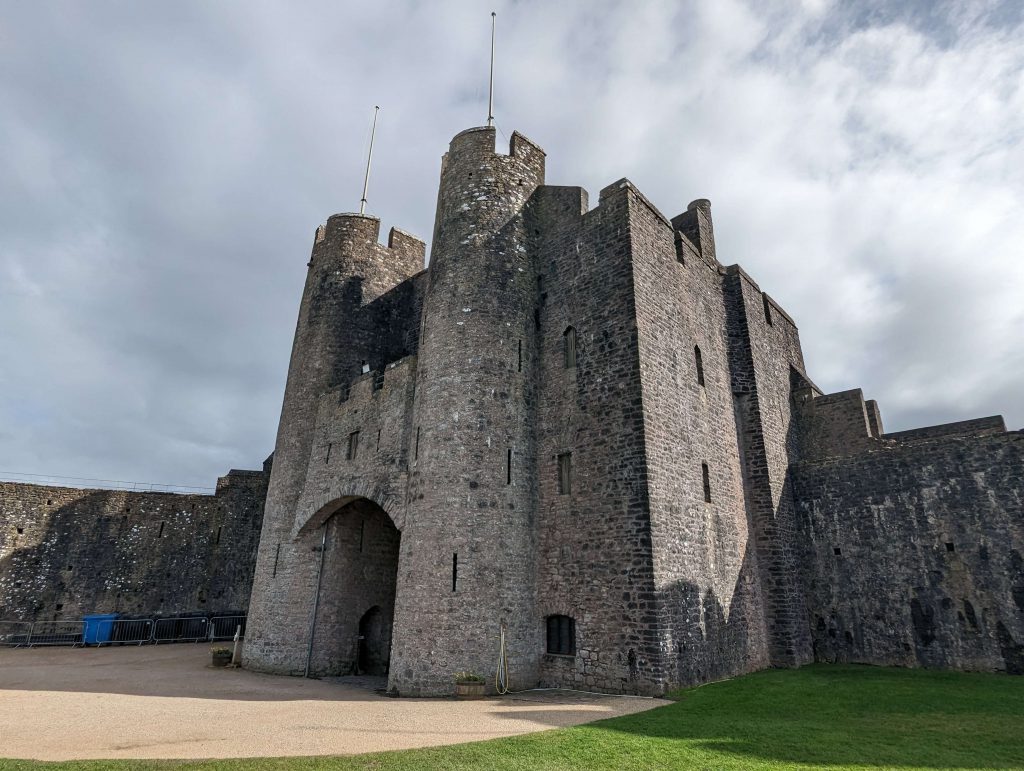
William de Valence passed away in 1296. His second son, Aymer de Valence succeeded him. However, historical records suggest that Aymer only visited the castle once, in the autumn of 1323, as the southwest region of Wales was experiencing an unusually peaceful period at the time.
Following the death of Aymer de Valence in 1324, the castle passed through marriage to the Hastings family. In 1389, 17-year-old John Hastings was killed by his best friend in a tragic jousting accident, ending a 250-year-long line of inheritance and resulting in Pembroke Castle reverting back to the crown. Following this event, short-term tenancies were granted by the Crown for the castle’s ownership. The castle began to fall into a state of disrepair, in fact it is recorded that one custodian, William Beauchamp stripped the lead from the roofs.
In 1400, Owain Glyndŵr had launched a rebellion in Wales. Fortunately, Pembroke Castle was able to avoid being attacked because its constable, Francis a Court, paid off the rebels with danegeld, which was a tax traditionally paid to Viking raiders to prevent them from attacking settlements. It was around this era that Pembroke Castle’s golden age came to an end and a gradual decline into disrepair began.
The Tudors
In 1454, Henry VI appointed his half-brother Jasper Tudor as Earl of Pembroke. Tudor later brought Margaret Beaufort, the newly-widowed wife of his brother Edmund Tudor, to Pembroke Castle in 1457. At only 13 years old and pregnant at the time of Edmund’s death, Margaret gave birth to her child, who would later become Henry VII, at Pembroke Castle.
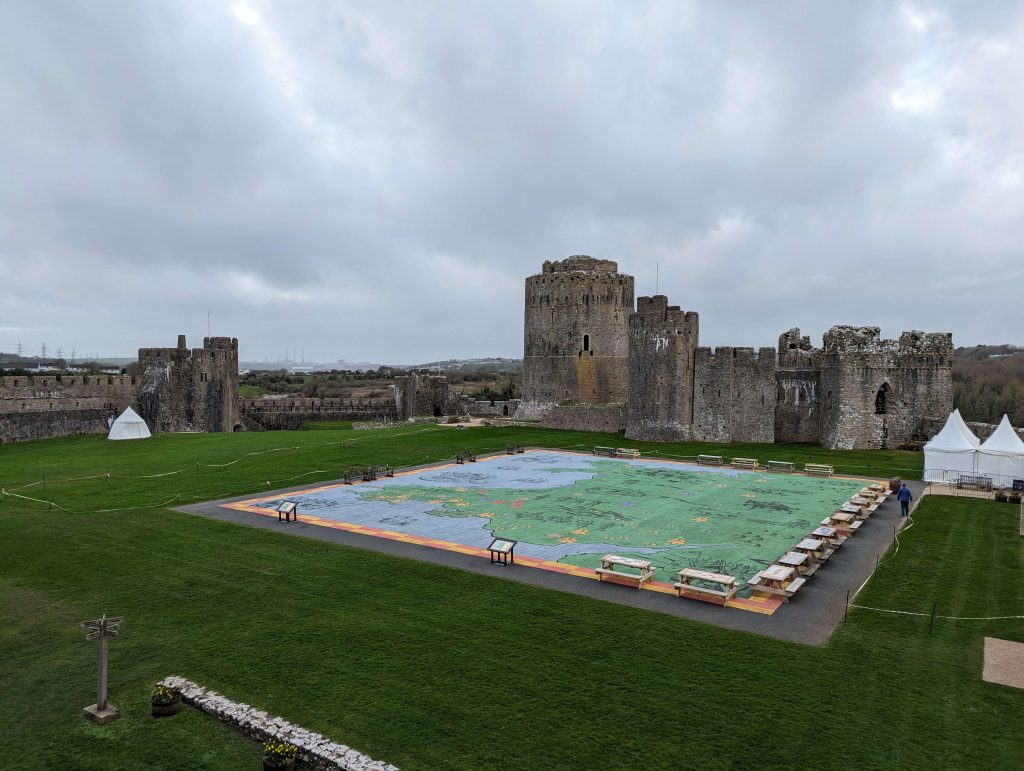

Following Jasper’s death in 1495, the castle once again came under the control of the crown. Although Anne Boleyn briefly held the title of Marchioness of Pembroke, the castle never again served as a private residence or administrative centre. It was during the reign of King Henry VIII in 1536, the Lordship of Pembrokeshire was abolished. Under Henry’s reorganisation of Wales, the old county of Pembroke became the foundation of a larger county, Pembrokeshire, and Pembroke Castle ceased to serve as an administrative centre. With the changing times, the castle had lost its military significance, and it seemed that there was no longer any practical purpose for Pembroke Castle to serve.
Civil War
During the 16th and early 17th century, the castle was known for its peaceful atmosphere. However, this tranquillity was disrupted when the First English Civil War broke out in 1642. While many parts of South Wales supported the King, Pembroke chose to side with Parliament. The mayor of Pembroke town at the time was John Poyer who rebuilt the castle defences. Despite being besieged by Royalist troops, the castle was ultimately rescued by Parliamentary reinforcements from the nearby Milford Haven. Following their victory, Parliamentary forces proceeded to capture several other Royalist castles in the region, including Tenby, Haverfordwest, and Carew.
At the onset of the Second Civil War in 1648, Colonel John Poyer, the commander of Pembroke, joined forces with Colonel Powell of Tenby Castle and Sir Nicholas Kemoys of Chepstow Castle in a Royalist uprising. Oliver Cromwell arrived in Pembroke on May 24, 1648, and after a seven-week siege and the arrival of heavy siege guns, the castle’s garrison surrendered. Poyer, Powell and Kemoys were tried for treason, found guilty and sentenced to death. The order to execute all three men was later revoked, and instead, it was decided that only one would face the firing squad. To determine who would be executed, Poyer and the two other men drew lots. Unfortunately for Poyer, he lost and was subsequently shot at Covent Garden in April 1649.
Cromwell then ordered the castle to be slighted (destroyed). Even the townspeople were encouraged to dismantle the fortress and use its stones for their own purposes.
Following its destruction, Pembroke Castle was reduced to little more than a romantic ruin, which became a popular destination for tourists and artists who were drawn to its picturesque walls and remaining towers.
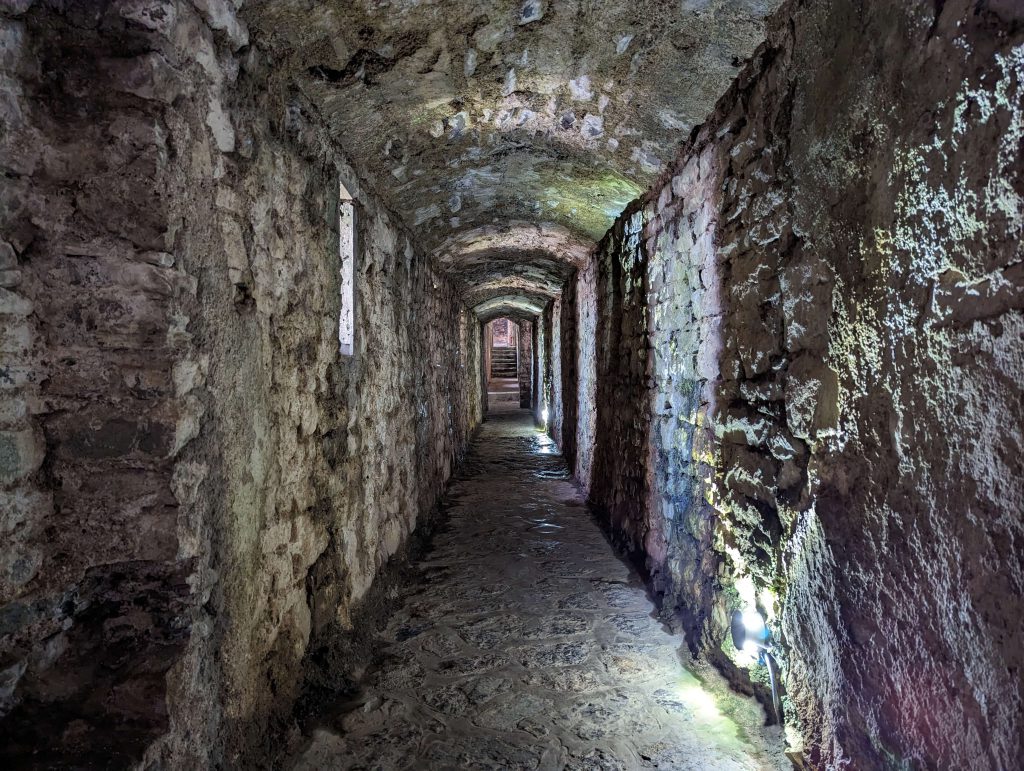

Restoration
In the 1880’s the castle was leased to J.R.Cobb, who rebuilt the Barbican Gateway. In 1928, Major-General Sir Ivor Philipps bought the castle and committed to a 10 year programme of restoration to help bring the castle back to its former glory. The restorations were completed by the start of World War II, and the castle was repurposed for military use once again. Troops from the Royal Fusiliers were quartered on the Outer Ward of the castle during this time.
Following Ivor’s death, a trust was established for the castle, which was jointly managed by the Philipps family and the Pembroke town council and the castle is open to the public to visit.
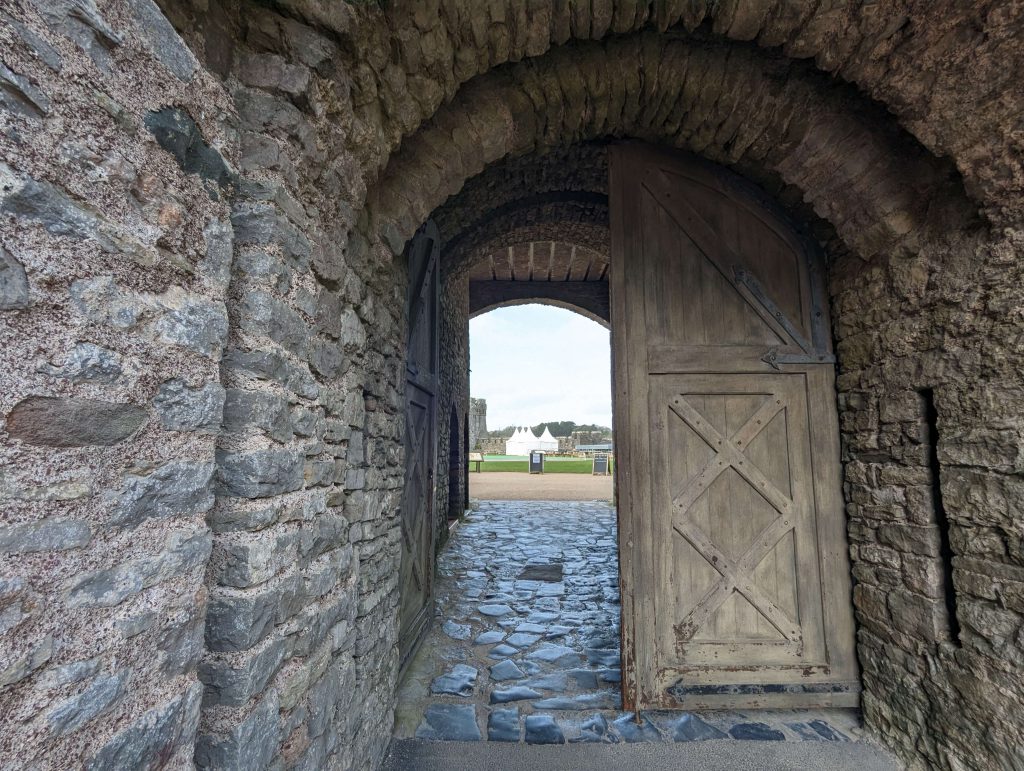

Although Pembroke Castle is now in a ruinous state, it is not difficult to imagine how grand it must have once been. The extensive ruins, featuring numerous towers, rooms and battlements, attest to the fact that it was a formidable stronghold. Interestingly, Pembroke Castle’s defences have never been breached. The castle is perched on a cliff, and in the past, there were marshlands on the other side where the nearest car park now stands. However, the marshlands have long since been drained, so you need not worry about your vehicles sinking!
In medieval times the only way to approach Pembroke Castle was via a narrow strip of land, where if you were an unwelcome guest you could expect arrows to rain down on you from arrow slits in the walls.
The outer Barbican, forming an L-shaped entrance, was yet another obstacle to overcome, and the inner gatehouse boasted a series of defences that were nearly impossible to penetrate. Portcullises, doors, murder-holes, and arrow loops were all employed to keep the castle’s occupants safe from harm.
Even if an attacker managed to breach the gatehouse, they would still face a formidable challenge in the form of the castle’s towers, walls, and battlements. The layout of the castle was designed to maximise its defensive potential, making Pembroke Castle one of the most impregnable fortresses of its time.
Pembroke Castle boasts a long, fascinating and diverse history, with tales of kings, knights, rebellions, battles and more. It is a site that ignites the imagination and captures the attention of visitors.
Click below to explore Pembroke Castle with us

